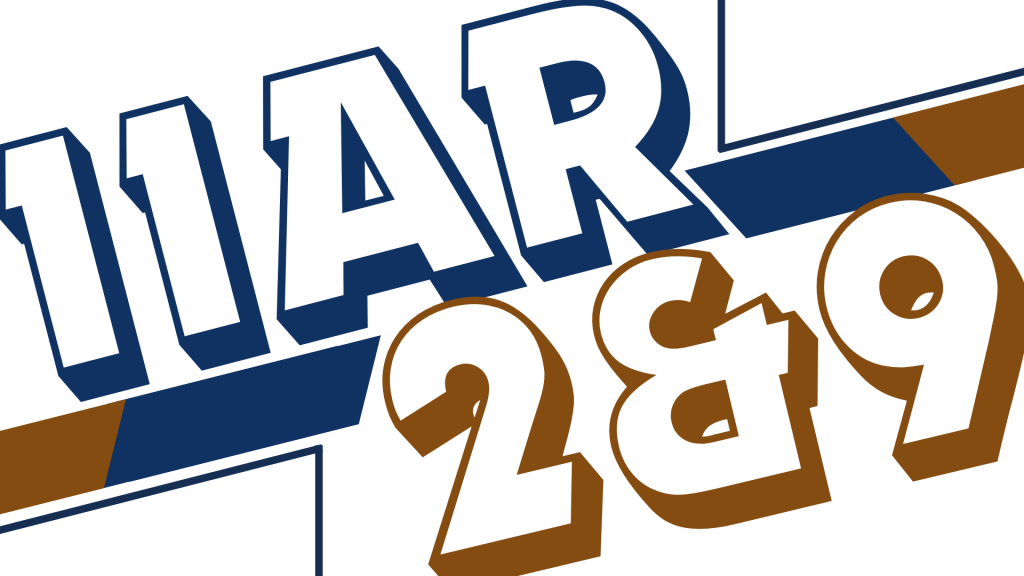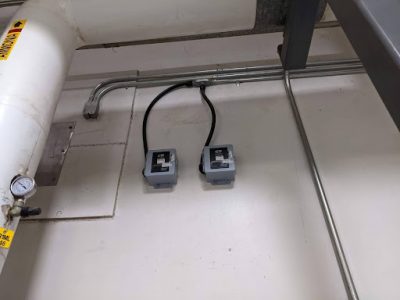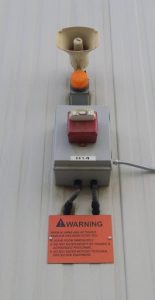Ammonia Detection Requirements
Detection systems are a key player in the realm of process safety. Early detection and notification of an ammonia leak has the potential to save lives. In addition to ensuring that ammonia detectors are operating and maintained correctly, it is equally important from a regulatory perspective to ensure required parameters are met. A partial list of these parameters includes:
- Alarm set-points
- Detector locations
- Detector interlocks
- Alarm locations
This blog will discuss the current ammonia detection requirements per ANSI/IIAR 2-2021 (for new systems) and ANSI/IIAR 9-2020 (for existing systems).
Alarm Levels
IIAR 2
ANSI/IIAR 2-2021 §17.7 outlines two (2) distinct alarm levels: Level 1 and Level 3. These levels build on each other as follows:
Level 1 Detection [ANSI/IIAR 2-2021 §17.7.1]
Level 1 ammonia detection must have the following features:
- At least one ammonia detector shall be provided in the room or area.
- The detector shall activate an alarm that reports to a monitored location so that corrective action can be taken at an indicated concentration of 25 ppm or higher.
Level 3 Detection [ANSI/IIAR 2-2021 §17.7.2]
Level 3 ammonia detection must include all Level 1 requirements and also the following features:
- Audible and visual alarms shall be provided inside the room to warn that, when the alarm has activated, access to the room is restricted to personnel authorized to respond to alarms and emergency responders.
- Upon activation of the alarm, control valves feeding liquid and hot gas to equipment in the affected area shall be closed. Refrigerant pumps, nonemergency fans, or other motors that are part of the ammonia refrigeration equipment in the room shall be de-energized.
- Upon activation of the alarm, emergency exhaust systems, where required, shall be activated.
You may note that Level 2 Detection is no longer listed in the normative section of this standard. One of the changes made to the 2021 standard, was to move the level 2 detection requirements from the normative section (required), to the informative appendix (not required). The level 2 detection section can now be found in Appendix A17.7.
IIAR 9
The ammonia detection requirements in ANSI/IIAR 9-2020 §7.3.12 reflect the requirements above, but are less stringent:
- At least one ammonia detector shall be provided in the room or area.
- The detector shall activate an alarm that reports to a monitored location so that corrective action can be taken.
- Audible and visual alarms shall be provided inside the room. Additional audible and visual alarms shall be located outside of each entrance to the machinery room.
Areas Required
IIAR 2
Machinery Rooms
Machinery Rooms must be equipped with a variation of Level 3 detection (Level 3 is never specifically mentioned in Chapter 6). §6.13 outlines the specific requirements for machinery room detection. Two (2) specific requirements worth highlighting include:
ANSI/IIAR 2-2021 §6.13.2.3 Detection of ammonia concentrations equal to or exceeding 150 ppm ( 1/2 IDLH) shall activate visual indicators and an audible alarm and shall activate emergency ventilation, where such is required in accordance with Section 6.14. 7. Once activated, emergency ventilation, and visual indicators shall continue to operate until manually reset by a switch located in the machinery room. Audible alarms shall continue to operate until they are manually reset by a switch located in the machinery room or alternatively in an area remote from the machinery room.
ANSI/IIAR 2-2021 §6.13.2.4 Detection of ammonia concentrations that exceed a detector’s upper detection limit or 40,000 ppm (25% LFL), whichever is lower, shall activate visual indicators and an audible alarm and shall activate emergency ventilation where such is required in accordance with Section 6.14. 7. If the detectors within the machinery room have more than one sensing range the detector with the highest range of detection capability is permitted to be used to activate this alarm response. Once activated, emergency ventilation, and visual indicators shall continue to operate until being manually reset by a switch located in the machinery room. Audible alarms shall
continue to operate until they are manually reset by a switch located in the machinery
room or alternatively in an area remote from the machinery room. In addition, the
following equipment in the machinery room shall be automatically de-energized and
shall remain de-energized until being manually reset:
- Refrigerant compressors.
- Refrigerant pumps.
- Normally closed automatic refrigerant valves that are not part of an emergency control system.
Other than Machinery Rooms
Rooms containing ammonia that do not fit the definition of a “Machinery Room” are classified as a “Non-Machinery Room Space” in ANSI/IIAR 2-2021. “Non-Machinery Room Spaces” must be equipped with Level 1 detection (§7.2.3) unless one of the following exceptions applies:
- Unoccupied areas with continuous piping that has been joined by welding and does not include valves, valve assemblies, equipment, or equipment connections do not require level 1 detection and alarm.
- Where not prohibited by the AHJ, rooms or areas in industrial occupancies that are normally occupied 24 hours/day and are regularly patrolled when the rooms’ functions are idled for scheduled downtime and are provided with an alternative to fixed detection and alarm equipment do not require level 1 detection and alarm. A means for emergency notification and initiation of alarm response in accordance with Section 17. 7 .1 shall be provided.
- Where not prohibited by the AHJ, alternatives to fixed ammonia leak detectors shall be permitted for areas with high humidity or other harsh environmental conditions that are incompatible with detection devices. A means for emergency notification and initiation of alarm response in accordance with Section I 7. 7. l shall be provided.
When “Non-Machinery Room Spaces” require emergency ventilation, the space must be equipped with Level 3 detection. Examples of such spaces include equipment pits and areas containing compressors or recirculators which do not meet the definition of a “machinery room”.
IIAR 9
Machinery Rooms
ANSI/IIAR 9-2020 §7.3.12.1 requires that Machinery Rooms shall be provided with ammonia detection and alarms. The standard does not make mention of “Non-Machinery Room Spaces” in regards to ammonia detection.
However, it should be noted that the appendix states that “Ammonia detection in areas other than machinery rooms is not required by IIAR 9. However, ammonia detection may be required in areas other than machinery rooms by the Building Code, Fire Code, or Mechanical Code in effect at the time of installation. In addition, the current version of IIAR 2 (ANSI/IIAR 2-2014 Addendum A) specifies that ammonia detection be provided in areas other than machinery rooms for all new construction unless the exceptions listed in IIAR 2 are met.”
Power Supply and Power Failure
IIAR 2
The ammonia detectors must be supplied by a dedicated branch in the power supply system. In the event of an emergency shutdown, the ammonia detection system must remain powered (§17.2).
A means for monitoring ammonia concentration during a power failure must be provided (§16.1.4). The most common approach to achieve this is to use a portable ammonia monitoring device (see Informative Appendix A16.1.4)
IIAR 9
ANSI/IIAR 9-2020 contains each of the requirements listed above. In addition, the standard also requires that in the event of a loss of power to the detection and alarm system, a power failure trouble signal must be sent to a monitored location (§7.3.12.3).
Alarms
IIAR 2
Alarms are required for both Level 1 and Level 3 detection. In these instances, the alarms must provide notification at a level of 15 dBA above average ambient noise and 5 dBA above maximum noise (§17.5).
Ammonia detection alarms must be identified with signage adjacent to the alarm. It is recommended the signage explain the meaning of the alarm.
IIAR 9
The requirements for alarms in ANSI/IIAR 9-2020 do not differ from the requirements listed above for ANSI/IIAR 2-2021. The requirements for alarm noise level and signage can be found in §7.3.12.5-6.
Testing
IIAR 6
While the requirements for ammonia detector testing are not included in ANSI/IIAR 2-2021 or ANSI/IIAR 9-2020, they are an important topic in regard to ammonia detection systems. ANSI/IIAR 6-2019 is the “Standard for Inspection, Testing, and Maintenance of Closed-Circuit Ammonia Refrigeration Systems”.
Table 12.3 contains a list of the inspection, testing, and maintenance tasks necessary for ammonia detection and alarm systems.
| ITM Task Description | Frequency |
| Inspection | |
| a) Visually inspect for proper installation of signage | S |
| b) Visually inspect electrical enclosures for covers to be in place or panel doors to be closed | S |
| c) Verify sensor(s) are mounted in place | A |
| d) Verify panel(s) are mounted in place
Testing |
A |
| Testing | |
| a) Calibrate all ammonia detector sensors | S |
| b) Expose the ammonia detector to calibration test gas and verify refrigeration equipment shuts down at specified concentration levels | A |
| c) Expose the ammonia detector to calibration test gas to automatically activate the emergency ventilation system | A |
| d) Functionally test alarms – audio and visual | A |
| e) Functionally test the power failure trouble signal to a monitored location for a power loss to the ammonia detection system | A |
| f) Measure audio alarm output level to have a minimum of 15 decibels (dBA) above average ambient sound level | Initially and whenever modifications to the area affect the sound level |
| g) Measure audio alarm output level of 5 decibels (dBA) above maximum sound level | Initially and whenever modifications to the area affect the sound level |
| Maintenance | |
| a) Replace ammonia detector sensor cells that do not calibrate | S |
Frequencies: S – Semiannual, A – Annual.
Important tasks to note include calibrating all ammonia detector sensors on a semiannual basis (twice per year), testing whether the detection shuts down refrigeration equipment and activates the emergency ventilation fan on an annual basis, and functionally testing audible and visual alarms annually.





Leave a Reply